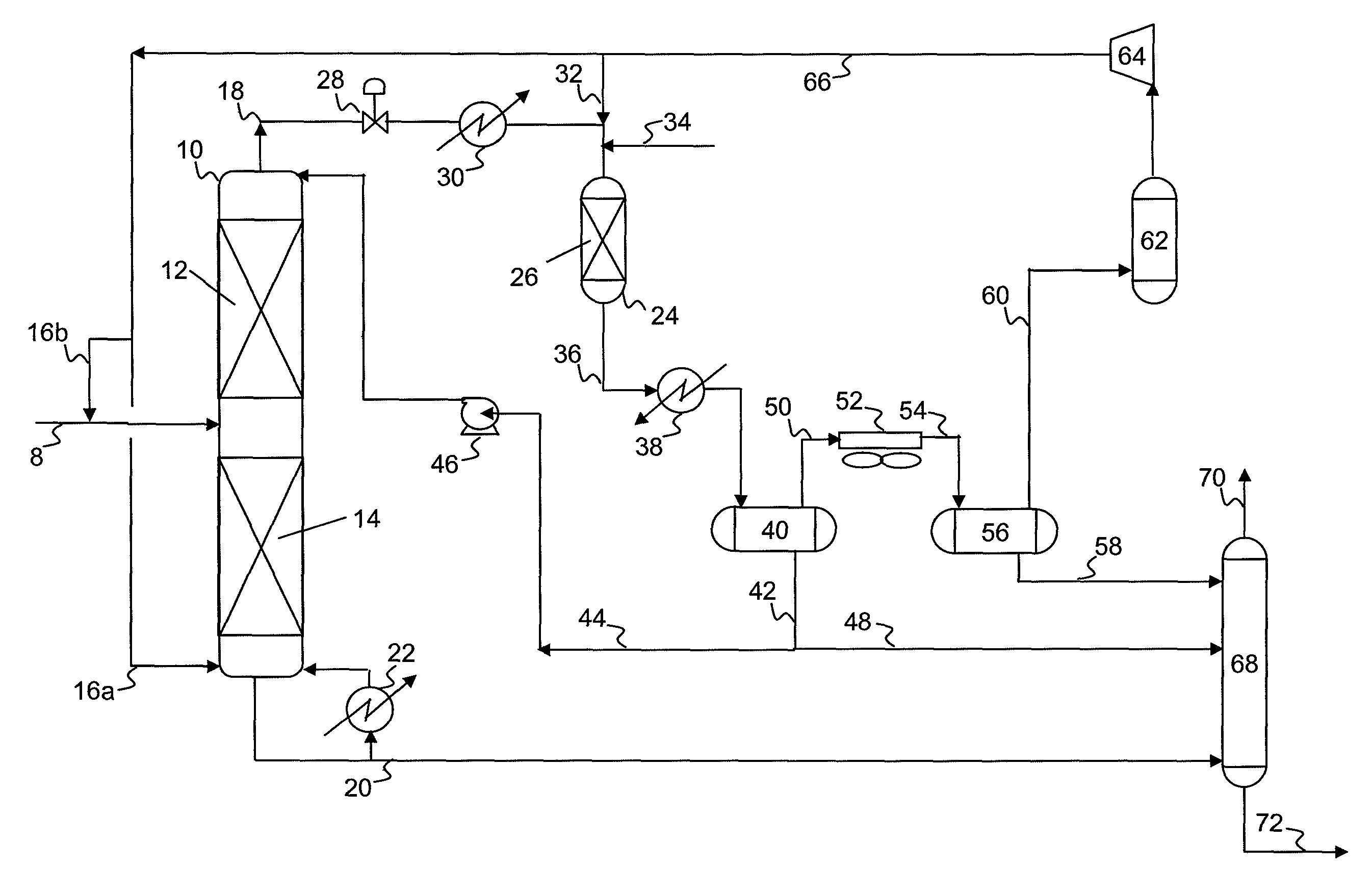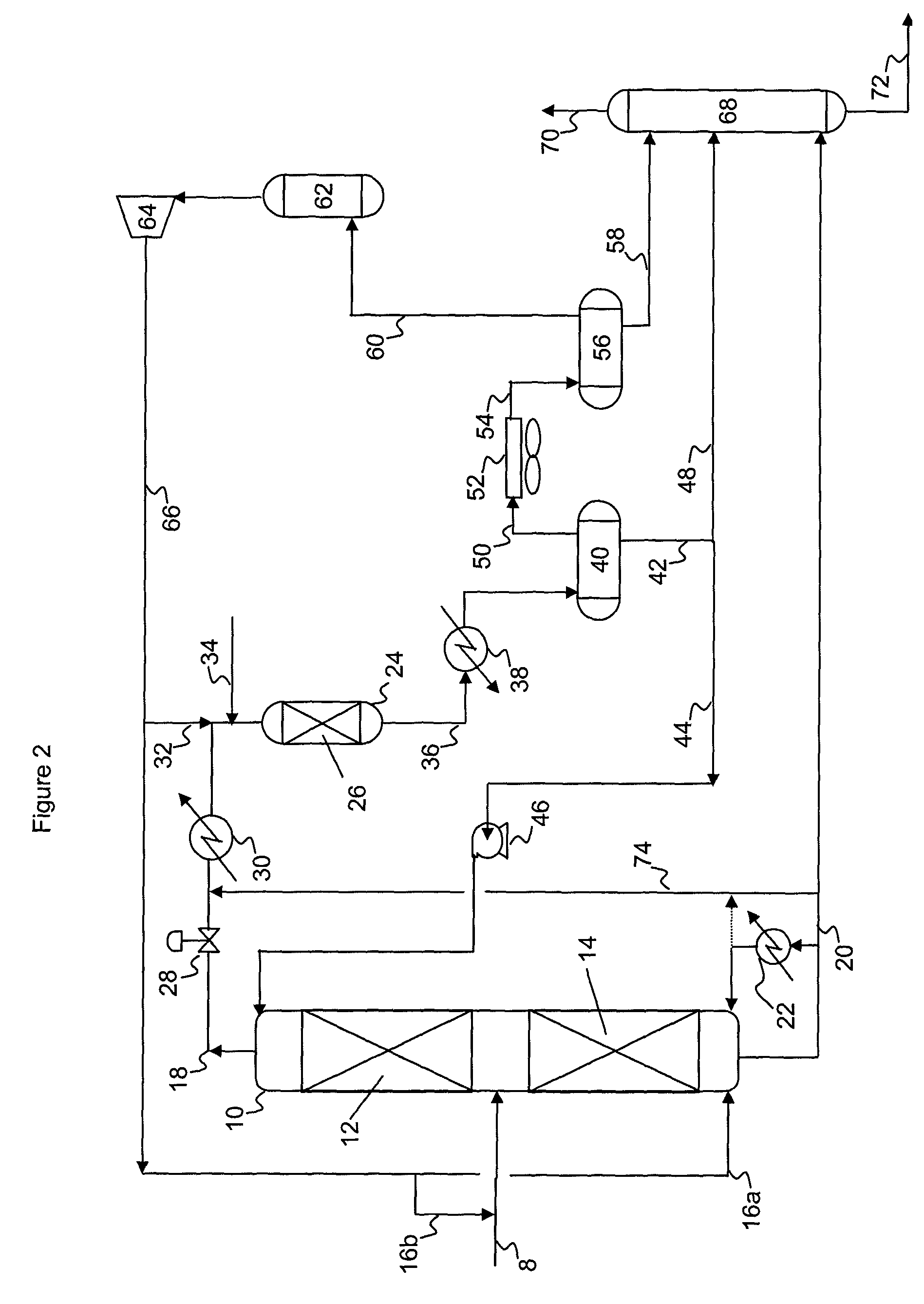Process to hydrodesulfurize FCC gasoline resulting in a low-mercaptan product
a technology of mercaptan and hydrodesulfurization process, which is applied in the direction of hydrocarbon oil refining, hydrocarbon oil treatment products, and refining to eliminate heteroatoms. it can solve the problems of reducing octane, loss of source olefins, and loss of olefins by incidental hydrogenation
- Summary
- Abstract
- Description
- Claims
- Application Information
AI Technical Summary
Benefits of technology
Problems solved by technology
Method used
Image
Examples
examples
A simulation of the flow scheme in FIG. 3 was performed, where the simulation was converged to determine the conditions at the inlet of the HTLP reactor. In the simulation, 50 lb / h FCC gasoline is fed to the catalytic distillation column reactor along with 35 scfh hydrogen, fed to the reboiler. The overhead pressure of the catalytic distillation column reactor is 260 psia, and the overheads temperature is 516° F. The overheads from the distillation column reactor are then combined with 35 scfh additional hydrogen and a recycle of heavy gasoline product (350° F.+). The combined stream then passes through a heat exchanger, resulting in the conditions for the feed to the HTLP reactor. The HTLP reactor is operated at a pressure 50 psi less than the distillation column reactor system, and the temperature of the HTLP feed is 619° F.
The partial pressure of hydrogen sulfide is reduced from 0.96 psi in the distillation column reactor system overheads, down to 0.698 psi at the inlet of the HT...
PUM
 Login to View More
Login to View More Abstract
Description
Claims
Application Information
 Login to View More
Login to View More - R&D Engineer
- R&D Manager
- IP Professional
- Industry Leading Data Capabilities
- Powerful AI technology
- Patent DNA Extraction
Browse by: Latest US Patents, China's latest patents, Technical Efficacy Thesaurus, Application Domain, Technology Topic, Popular Technical Reports.
© 2024 PatSnap. All rights reserved.Legal|Privacy policy|Modern Slavery Act Transparency Statement|Sitemap|About US| Contact US: help@patsnap.com










